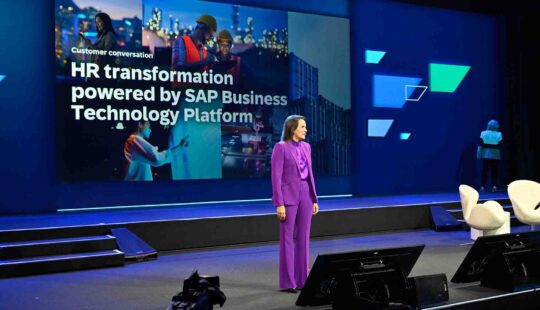The world right now is changing in so many ways. Even if we just focus on our professional lives, uncertainty, change, and transition are all around us.
Take automation, which has already brought changes to many jobs, as an example. The jobs that are currently available in today’s economy depend greatly on lifelong learning because they continue to change and evolve. This is nothing new, but the rapid pace at which technology and business models change is dramatic and with that comes the need to constantly keep skills up-to-date. According to a McKinsey study, adoption of automation and artificial intelligence (AI) will mark an acceleration over the shifts of even the recent past. And this change is impacting all jobs: even those with high incomes spend an average of 31% of their jobs doing things that could be automated, according to McKinsey. Stockbrokers, for instance, spend a good portion of their time gathering and processing data, which could be done automatically with even greater accuracy than the way it is now done.
So, lifelong learning will be relevant for everyone. The good thing is that people are naturally curious. We’re constantly asking ourselves questions and finding answers. In addition, employees are keen on upskilling to be prepared for the future. According to a recent PwC study, 77% of the workers surveyed are ready to learn new skills or completely retrain, with 74% seeing training as a matter of personal responsibility.
This is one of the reasons why employees expect a continuous learning culture. The risk of not building one is that employees may move to other organizations in order to remain relevant and add new skills. At a time when the Great Resignation shows no signs of slowing down – according to a statement from the World Economic Forum, one in five workers plan to quit their jobs in 2022 – organizations unquestionably have to offer development opportunities. They need to upskill and reskill their employees not just to keep them excited and prepared for new job requirements, but also to fill positions they are not able to fill with external candidates.
Therefore, a key to organizations’ future success will be to provide continuous learning options and instill a culture of lifelong learning throughout the organization to develop the workforce of the future. For many years, learning and development organizations tried to find the optimal way to serve different learning needs to push learning like compliance trainings to their employees, to meet specific departmental training needs, or to empower their employees for further personal development, all while considering that the way of learning and employee expectations have changed tremendously. And this is change that is going to stay. According to a Fosway survey, only 5% of respondents think that their learning strategy, investment, and resourcing will go back to what it was before the pandemic began.
But exactly what do we mean by a learning culture? A learning culture refers to an organization’s values, beliefs, and norms that influence learning behavior and outcomes. Unfortunately, maintaining one is no easy task. A recent survey conducted through SAP’s Fostering Lifelong Learning research program showed that only 30% of employees consider their organization to have an excellent learning culture. So how can an organization take steps towards creating a strong culture of lifelong learning? As part of the research program, we uncovered four evidence-based factors integral to a culture that encourages learning across an organization. Focusing on these can set you on the path towards an organization filled with lifelong learners.
- Reward and recognize learning: Integrate reward and recognition into your learning strategy. Not only does this demonstrate that learning is an organizational priority, but it also acknowledges the employees who proactively take advantage of learning opportunities.
- Leadership support and role modeling: Leaders should serve as learning role models to employees. They can do this by sharing their perspectives and experiences on their own learning and development. It’s important for leaders to “walk the learning talk” and not contradict what employees are being told about the importance of learning.
- Closing the awareness gap: It’s key for employees across the organization to be made aware of what learning is available to them. This will help to drive consistent perceptions of learning among all different employee subgroups resulting in a stronger learning culture.
- Technology enablement: Technology is a crucial factor in the learning culture of organizations. Technology can have an impact on an employee’s overall learning experience and should be leveraged to improve that experience and ensure smooth, easy access to learning opportunities.
Creating a learning strategy that addresses these four factors can have you on your way to building a culture of lifelong learning across your organization. In this rapidly changing business environment, this is more important now than ever.
Get more insight into the Fostering Lifelong Learning research and how a learning management system can concretely support you in fostering a continuous learning culture.
Margit Bauer is director of Solution Marketing at SAP SE.
Mark Tarallo is a solution marketing fellow at SAP SuccessFactors.



